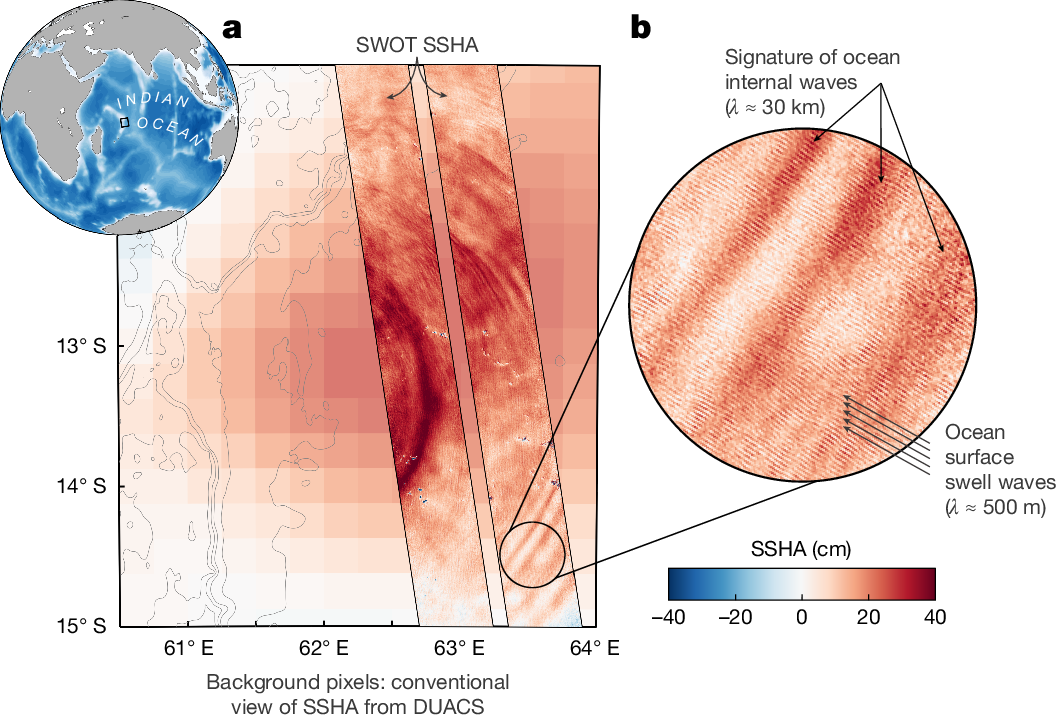2025-05-27 テキサス A&M大学
<関連情報>
- https://stories.tamu.edu/news/2025/05/27/small-currents-big-impact-satellite-breakthrough-reveals-hidden-ocean-forces/
- https://www.nature.com/articles/s41586-025-08722-8
衛星高度計によるワイドスワス観測で明らかになった地球規模のサブスモススケール海洋ダイナミクス Wide-swath satellite altimetry unveils global submesoscale ocean dynamics
Matthew Archer,Jinbo Wang,Patrice Klein,Gerald Dibarboure & Lee-Lueng Fu
Nature Published:16 April 2025
DOI:https://doi.org/10.1038/s41586-025-08722-8

Abstract
Ocean submesoscale (1–100 km) processes and their substantial impact on Earth’s climate system have been increasingly emphasized in recent decades by high-resolution numerical models and regional observations1,2,3,4,5,6,7,8,9,10,11. However, the dynamics and energy associated with these processes, including submesoscale eddies and nonlinear internal waves, have never been observed from a global perspective. Where, when and how much do these submesoscale processes contribute to the large-scale ocean circulation and climate system? Here we show data from the recently launched Surface Water and Ocean Topography (SWOT) satellite12 that not only confirm the characteristics of submesoscale eddies and waves but also suggest that their potential impacts on ocean energetics, the marine ecosystem, atmospheric weather and Earth’s climate system are much larger than anticipated. SWOT ushers in a new era of global ocean observing, placing submesoscale ocean dynamics as a critical element of the Earth’s climate system.



